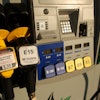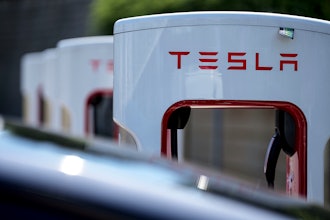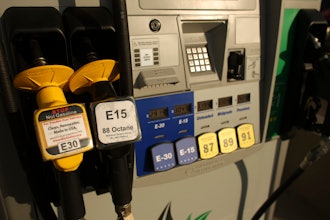ROCHESTER, N.Y. (AP) -- As it inches closer to emergence from bankruptcy, Eastman Kodak is still wrestling with the financial repercussions of past environmental problems.
Federal and New York state officials have filed a dozen claims for past environmental damage and expenses, including demands for up to $10.1 million to address toxic silver contamination of sediments in the Genesee River.
At the same time, Kodak is negotiating with a state agency to create an environmental trust fund that would become responsible for ongoing cleanup and any as-yet-undiscovered issues related to historic contamination at Eastman Business Park.
Kodak would endow the trust fund with $49 million then wash its hands of future liability for the historic environmental problems at Eastman Business Park. If that money were to run out, someone else would have to pick up the tab for study or cleanup at the 1,200-acre business park.
Asked if that "someone" would be state taxpayers, Kodak spokesman Christopher Veronda said, "The discussions on the trust are just that — discussions and an exchange of views between Kodak and government representatives."
Officials at the state agency, Empire State Development, did not respond to a request for comment.
Over the last quarter century Kodak has spent hundreds of millions of dollars addressing environmental issues at the park, where spills and leaks of toxic chemicals created what was considered the most extensive soil and groundwater contamination ever found in the Rochester area.
In 1990, the company pleaded guilty to two misdemeanors for violating state environmental laws and paid $2.15 million in criminal and civil fines. It later paid $5 million in federal fines.
The negotiation over creation of the trust fund first came to light in a document April 30 in Kodak's ongoing case in U.S. Bankruptcy Court. The filing was part of Kodak's Chapter 11 reorganization plan.
Veronda said an environmental trust fund is "a common tool" in Chapter 11 reorganizations and would, in this case, be "a significant milestone" in the effort to redevelop Eastman Business Park.
It also could be a necessary precursor to sale of the business park, as buyers might be reluctant to take title to a property with a long history of serious environmental contamination.
Noting the state Department of Environmental Conservation now oversees environmental remediation and protection at the park, Veronda said "the trust ensures that the DEC has the necessary resources to continue to protect human health and the environment — now and for the future."
Ingrid Palermo, a bankruptcy lawyer in Rochester, said the trust is a good step.
"You can ensure the area would be cleaned up," said Palermo, who is not involved in the environmental aspects of the Kodak case. "It would obviously help them sell the property. It's very rare to find a bank that's willing to lend if the property isn't cleaned up."
Kodak already had set aside $23 million to pay for environmental remediation at the park under terms of a DEC hazardous-waste permit. That money would be shifted to the new trust fund. Kodak would add $26 million more, some of which would come from proceeds of the sale of its power plant, water plant and wastewater treatment plant to Recycled Energy Development LLC of Illinois.
Veronda said it was unlikely the $49 million in the trust fund would be exhausted. "Future costs ... can be well-anticipated based on the extensive study, documentation and expertise around environmental issues at the site," he said.
Palermo said it wouldn't be surprising if some third party, such as the state, provided financial backup for the trust fund. "If there wasn't an ultimate guarantor and the worst-case scenario happened, who would clean it up?" she said.
Veronda said money in the trust fund was not intended to pay for long-term monitoring or removal of low-level radioactive waste buried in an old company landfill in the western part of the business park.
The Democrat and Chronicle reported last month that there is no direct government oversight and no public plan for protecting or removing the waste, most of which came from the manufacture of optical lenses containing radioactive thorium.
"The material poses no threat to human health or the environment, and the landfill has been properly maintained and monitored," Veronda said.
The filing of the company's reorganization plan in late April also revealed the existence of 15 environmental claims that had been filed in July 2012.
When a company files for bankruptcy protection, creditors, including government agencies, must submit claims for pre-bankruptcy costs quickly or forever surrender their right to seek the money. Like other unsecured creditors of Kodak, the federal and state agencies that filed environmental claims may get only pennies on the dollar, Palermo said.
Among the claims are money for annual environmental regulatory fees, potential fines for wastewater exceedances and environmental oversight expenses dating back a dozen years. The DEC and U.S. Environmental Protection Agency also asked for expenses related to three out-of-town hazardous waste sites for which Kodak may have some responsibility.
The second-largest claim was $3.8 million to clean up contaminated sediment in a seven-acre storm water retention pond at Rochester Technology Park near the corner of Elmgrove and Buffalo roads. Kodak built and operated the Gates business park until selling it in 2000.
The largest was $8.6 million to restore sediment in 419 acres of the lower Genesee River. The U.S. Department of the Interior and the DEC filed identical claims, with the DEC adding $1.5 million for administrative expenses.
The sediment contains harmful levels of silver, which Kodak used in vast quantities to make photographic film and paper. The company recycled as much of the metal as possible, but some of it passed through the Kings Landing water treatment plant into the river.
The DEC said studies had documented elevated levels of silver downstream of the plant and some ill effects on small bottom-dwelling crustaceans. Silver also is accumulating in fish, the agency said.
Veronda said the company is discussing settlement of the claims with state and federal officials.






















